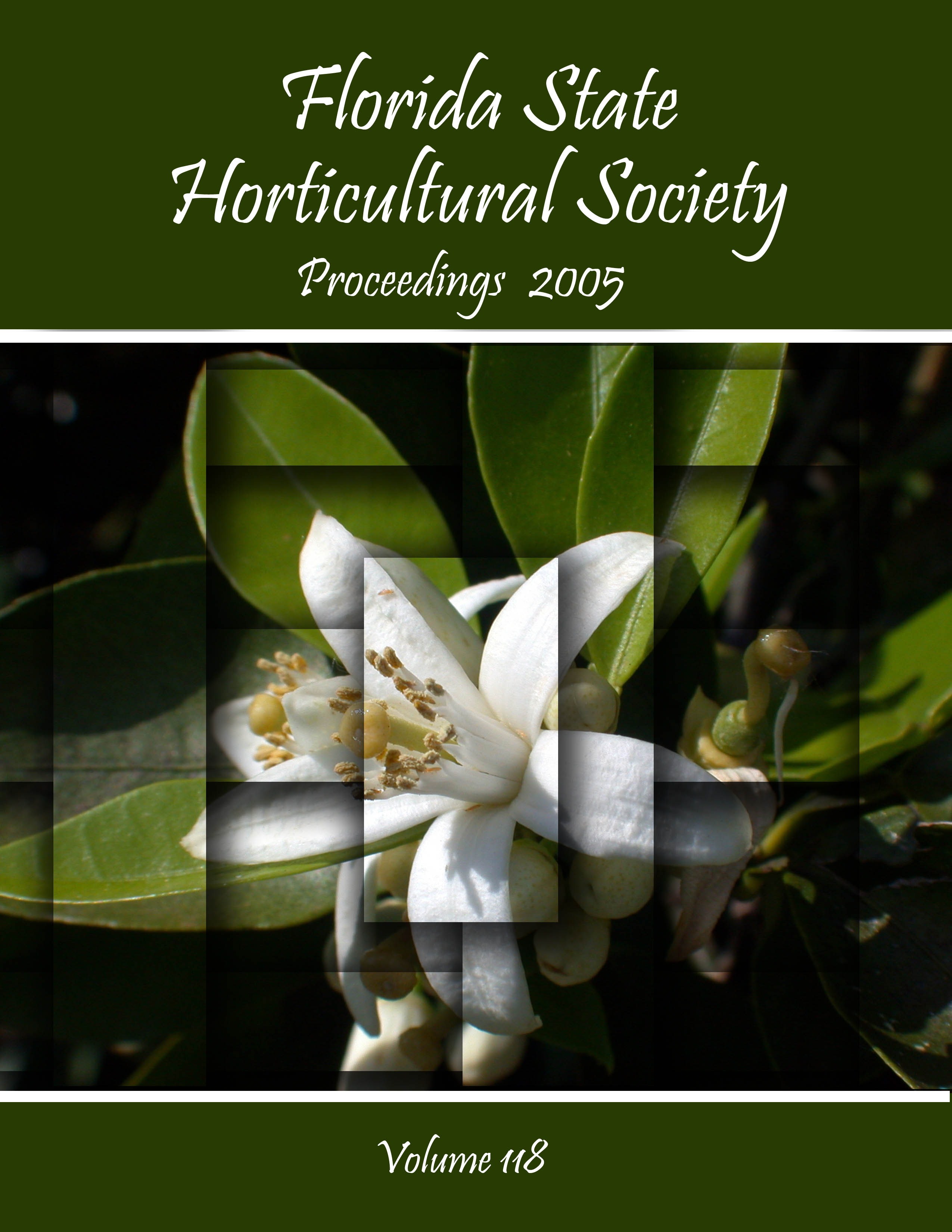Abstract
Because of limited land availability for fallowing and rotation, cut flower growers in Florida face the constant challenge of soil-borne pest buildup at their production sites. Soil from a snapdragon (Antirrhinum majus) cut flower production site in southeast Florida was found to be naturally infested by Fusarium spp. Pythium aphanidermatum, and Rhizoctonia spp., with Fusarium spp. detected at the highest incidence. The objective of this research was to document the adverse impact of soil-borne pathogens found at this site on four common cut flower species: 'Echo Pink' lisianthus (Eustoma grandiflorum, 'Potomac Rose' snapdragon, 'Queen of Africa' white dill (Ammi majus), and 'Qis White Cut' larkspur (Consolida ajacis). The growth of plants in naturally infested and autoclaved soil was compared in a greenhouse experiment. Final plant height was reduced (P = 0.10) when snapdragon, lisianthus, and larkspur were grown in infested soil. Root and shoot weight, and number of flower buds, blooms, and total flowers of snapdragon were reduced (P = 0.05) by growth in the nonautoclaved soil. Shoot weight, number of flower buds, and total number of flowers for lisianthus were lower (P = 0.05) in the non-autoclaved soil. For larkspur only the total number of flowers was reduced (P = 0.10) by growth in the non-autoclaved soil. Although the shoot weight of white dill was reduced in the non-autoclaved soil, flower yield was not changed by the soil treatment. Root discoloration was significantly greater (P = 0.01) on snapdragon and larkspur than on lisianthus and white dill. The lack of impact of soil treatment on flower production suggests that white dill was tolerant to the fungal pathogens in this soil.

